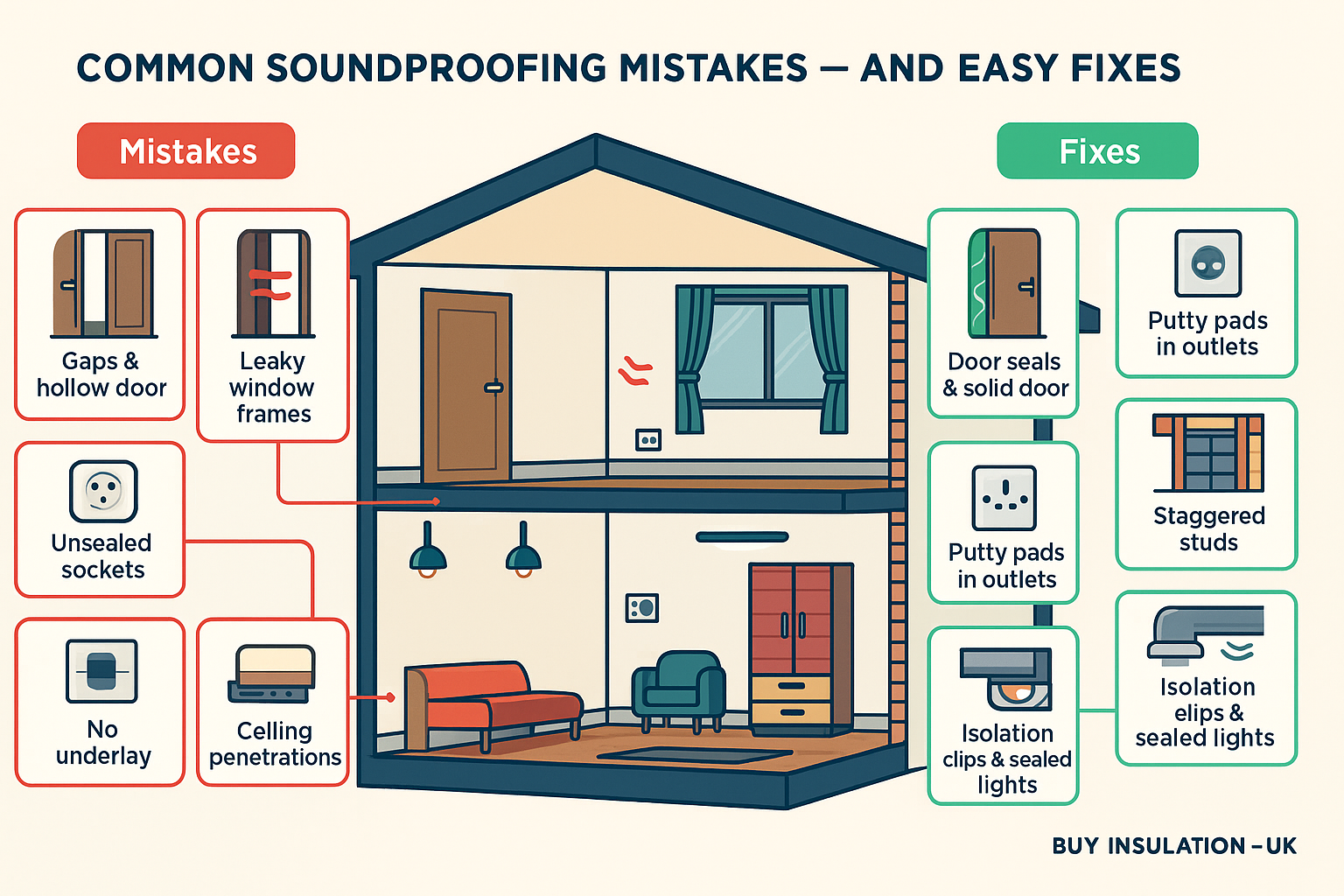Getting soundproofing right can completely transform the ambience of your home or workplace, making it quieter, calmer and far more comfortable. But we’ve seen too many people invest time and money into setups that fall short. The problem? It’s usually not the effort, but a few common mistakes that lead to bad soundproofing. Whether it’s using the wrong materials or missing key steps during installation, these issues can turn a good idea into a frustrating experience.
At Buy Insulation, we've helped many homeowners and builders pick the proper acoustic insulation for walls, ceilings and floors. Here's what we've learned over the years and what we think you should know before starting your soundproofing project.
Don't Skip the Planning Stage
One of the biggest mistakes people make is rushing into a soundproofing job without fully understanding the problem. Adding a few acoustic panels might solve the issue, but without checking your room's structure or pinpointing the noise source, you're likely wasting time and money.
Ask yourself:
-
Is the noise airborne (like traffic or voices) or structure-borne (like footsteps or pipes)?
-
Which walls or surfaces are letting the sound through?
-
Are there any gaps around doors, windows, or sockets?
The right solution depends on how sound travels and that can only be determined by carefully inspecting your space.
Common Soundproofing Mistakes to Avoid
We've encountered numerous homes and offices where the effort was present, but the results fell short of expectations. Here are some of the most common errors we've seen:
-
Using the wrong materials
Not all materials block or absorb sound. Things like mattresses, rugs, or egg cartons are nearly useless. You’ll need proper acoustic insulation for walls that’s dense enough to block noise or porous enough to absorb it.
-
Focusing on one wall only
Sound travels in every direction. If you're only treating one wall, you’re probably leaving gaps elsewhere. That’s where bad soundproofing often fails, leaving flanking paths open.
-
Skipping sealing
Even small gaps around sockets or doors can allow noise to pass through. You'll need acoustic sealants or proper door kits to fix this.
Quick Fixes That Don't Work
Here are a few failed soundproofing solutions we often see:
-
Soundproof paint or wallpaper
-
Foam panels are placed without sealing edges.
-
Light, thin panels on hollow walls
-
DIY hacks using cardboard or yoga mats
These solutions either fail to block noise effectively or make very little difference unless used in conjunction with proper acoustic products and techniques.
What Works?
Here's what we've found to be most effective:
-
Use proper Acoustic Wall Tiles – Great for sound absorption in offices, studios, or echo-prone rooms.
-
Install Acoustic Insulation for Walls – Products like mineral wool or dense soundproof slabs help block noise between rooms.
-
Seal all gaps – Use acoustic sealants and door kits to reduce flanking noise.
-
Decouple surfaces – In some cases, separating walls or ceilings with special clips or resilient bars helps stop sound from moving through solid connections.
Final Thought: Trust the Right Products and Advice
Soundproofing isn't about doing more, it's about doing it right. We always recommend taking a little extra time to understand your space before buying materials. Avoid falling into the trap of flashy but ineffective products that often lead to common soundproofing mistakes.
At Buy Insulation, we've made it our mission to help you find solutions that work. Whether you're treating a home office or a busy flat, we've reliable acoustic insulation options and honest advice to accompany them.
Let's make your space quieter - for good.


